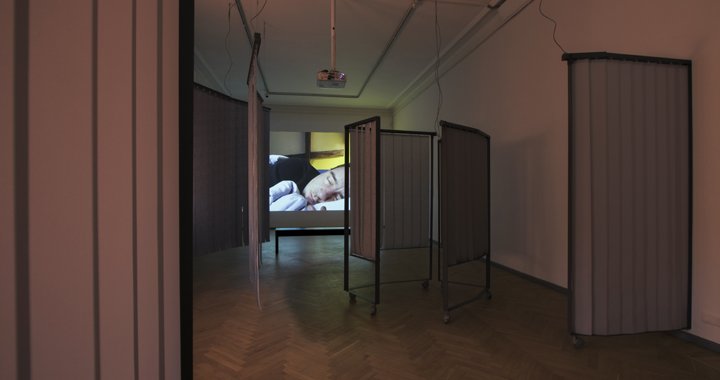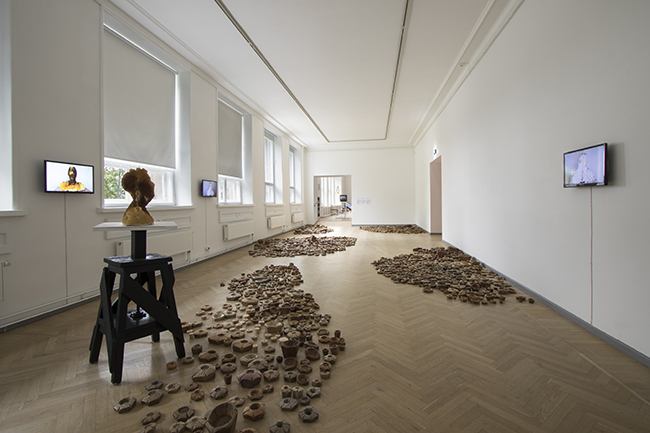
In balance with our time
Express-interview with curator Siim Preiman
24/07/2019
Photo: Kaisa Maasik
From June 22 till September 1 one of the main exhibition spaces in Tallinn – Tallinn Art Hall – is hosting an international group show “The Art of Being Good” which overlooks the diverse nature of art and the ethics of creating it, within the borders of the modern world. Among the participating artists are Dylan Ray Arnold, Hanna Piksarv, Carl Giffney, Uku Sepsivart, Mari Volens and others. “The Art of Being Good” is curated by Siim Preiman.
““The Art of Being Good” is an attempt to put together an exhibition befitting the seriousness of the circumstances. Although tackling the ecological, social and economic components of the crisis is normal in art, artworks and exhibitions rarely direct attention towards their own role in the ruinous sequence of events. Therefore, we see a record of the people living in poverty, who don’t receive a cut of the profits from exhibiting the work depicting them, and artworks created from poisonous artificial materials, which warn us of the impending plastic dystopia,” Siim Preiman writes in the special booklet of the exhibition (it’s only available through pdf, thus highlighting the importance of the theme of the show). How can art change the world and how does the world impact art? As globalisation and economic importance in the field of culture keeps growing, artists tend to increasingly look at social topics that, even without noticing, affect us every day.
Arterritory.com invited Siim Preiman to tell a little more about the show!

What is the exhibition “The Art of Being Good” about and what was the main focus of attention for you as a curator?
Broadly saying the exhibition is about the difficulty of remaining ethical in our actions in the context of the ever-growing global state of crisis. In finer details the exhibition looks at the role of art in this grand chain of events. Knowing first-hand the single use resources that go into every show at any art institution, “The Art of Being Good” takes another direction. Of course, reuse is a natural part of economics, but this time we banned all new material purchases, did not produce any more printouts than required, restricted exhibition related transport and travels and took down all the exhibition lights.

Lately, the diversity of art media is often being discussed. How much, to your mind, the material chosen by the artist values today?
Based on my personal utopian dream of rapid and radical material reduction, I think the material aspect of any artwork is more crucial than ever. Naturally, every material or object has inherent qualities that contribute to the conceptual make-up of an artwork. At a time of material excess it is important to take a moment and think of the responsibility that comes along with adding something new to the world and consider whether the chosen materials are best for the given topic. If you are addressing the violent extraction of precious metals and minerals from our earth but showing the work using technology that relies on these very materials, you are on the wrong path.
“The Art of Being Good” is a group show with more than ten participating artists. What is it that unites these authors and how did you choose them?
The exhibition brings together a selection of artists whose personal beliefs and actions are in balance with the topics and goals present in their art. In that sense the artists are not similar at all, as they work in very different ways, but thanks to this they give a more detailed and still of course incomplete overview of various global themes. Some of the artists I knew before and some I found during research while keeping my eyes open for creators with a certain type of sensitivity.

What does it mean “to be good” in art?
I would add the human element to the material concerns mentioned already before. Extra care should be taken to protect the people who give their stories and images for art. It would be fair to share the profits with those depicted.
The struggle towards being good is eternal and sometimes we might judge people too early. For example, Uku Sepsivart who participates in the show, made his work in cooperation with bees. It would be easy to corner him by asking how his actions differ from regular beekeeping. Are the bees somehow aware of their participation in an art project? Or is he repressing these creatures like any other industry? These are difficult questions that the artist himself is very aware of. Here is a person who is looking for a new method of co-existing, and of course he will make mistakes along the way. Most likely his next work will reflect what he has learnt while making “Bee Dependent Existence”
Can art affect the process of globalisation?
Definitely! The only thing is that art is not a very quick and effective tool to bring about change so it is wise to be cautious regarding the expectations we project onto it. Every action we take affects these processes little by little.
